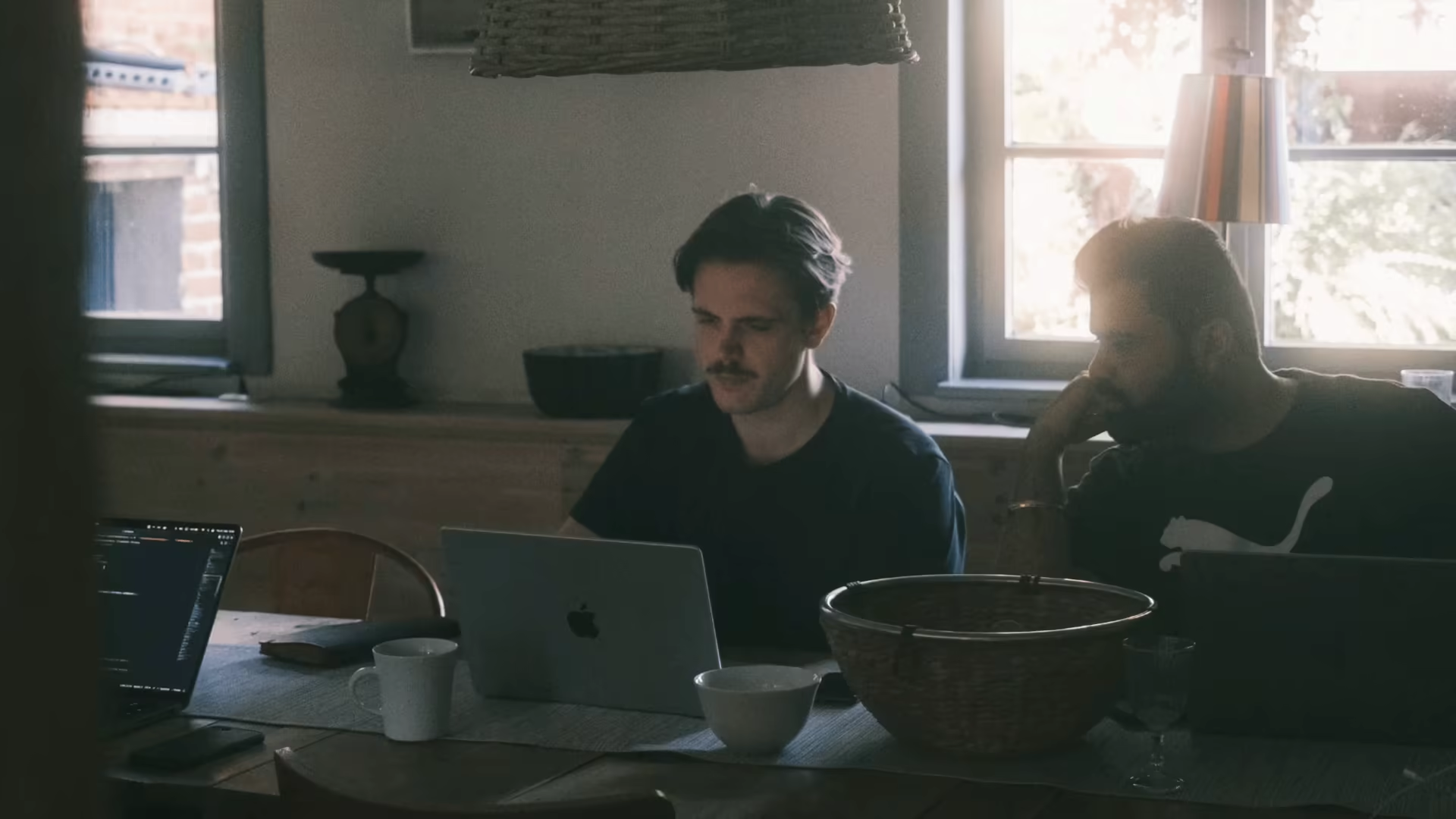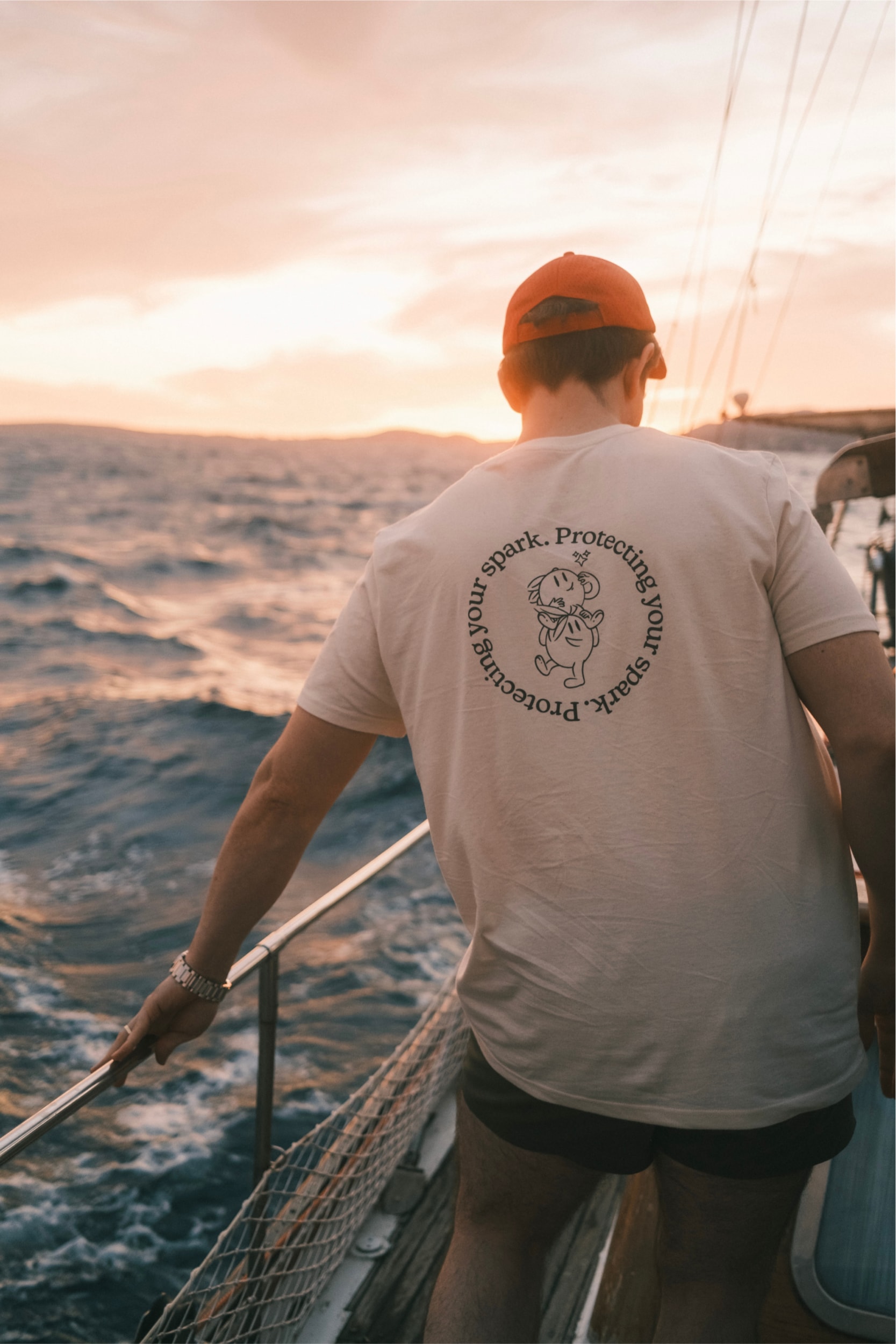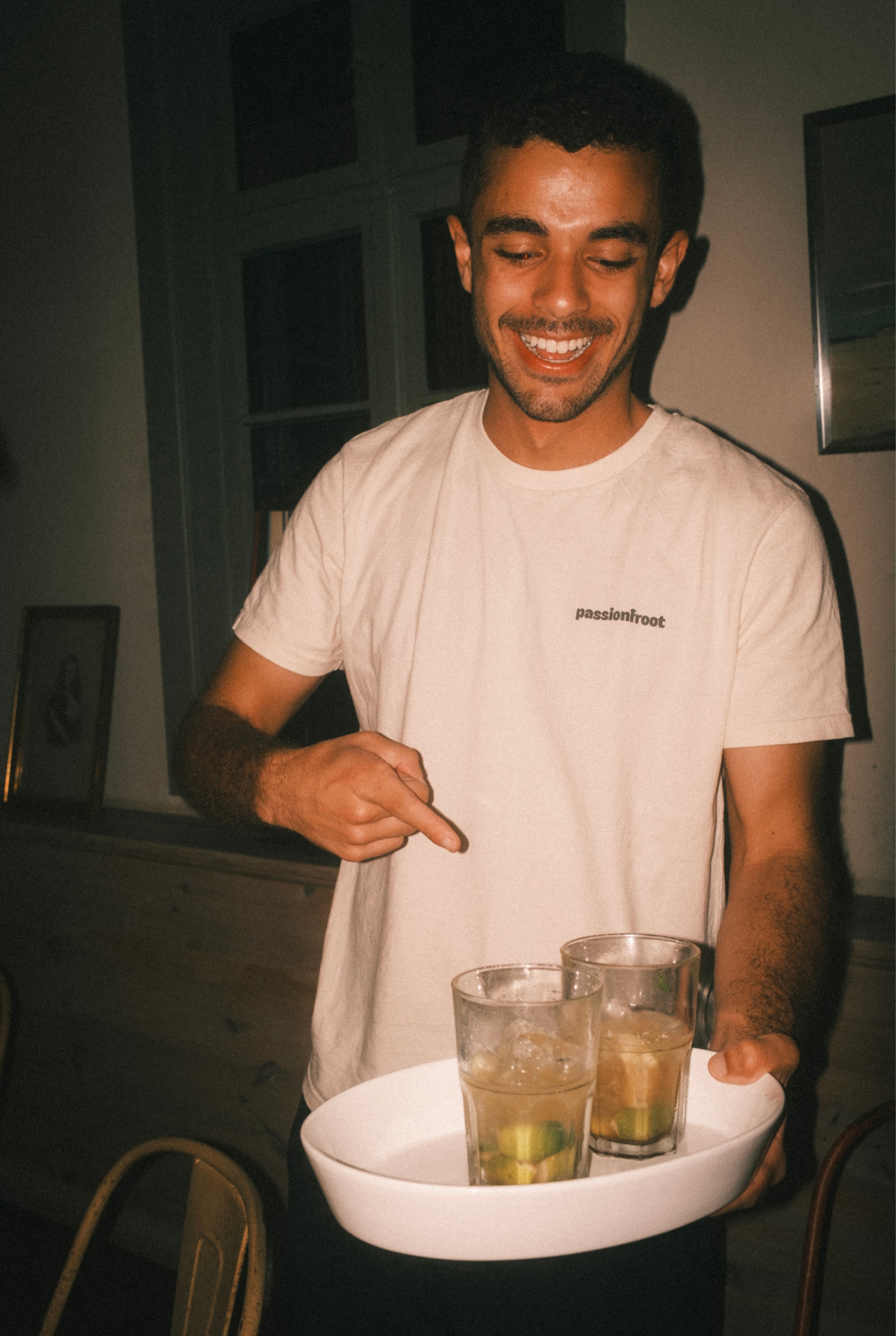Team Values
A set of principles and convictions that guide every decision and action at Passionfroot.
Team Values
A set of principles and convictions that guide every decision and action at Passionfroot.
Passionfroot • values
01
Growth
We believe in life-long learning, giving and receiving candid feedback. It's okay to try and make mistakes as long as we take ownership and learn from them.
Passionfroot • values
02
Passion
We believe everyone is unique in what they are passionate about. Together, these perspectives and passions help us build the best product.
Passionfroot • values
03
Creativity
We believe creators are problem-solvers that find solutions with limited resources. To truly help them, we look at challenges with creativity and curiosity.
Passionfroot • values
04
Community
We believe that communities are magical and help individuals to belong. So we serve communities whenever we can with our diverse, inclusive approach.
Showcase
Go behind the scenes and explore the product and branding work of the Passionfroot team.




















Meet The Team
Get a feel for the people who make up the Passionfroot team. Be a fly on the wall as they reveal how they work and why.





What is Passionfroot?
 JP
JPOriginally, our vision was to become an all-in-one platform that helps creators monetize and manage their business. Many creators start by creating content and eventually aim to monetize it. Our initial focus was assisting them with brand partnerships or sponsorships, as that’s one of the biggest revenue streams.
Today, it has evolved to help marketers and companies scale their go-to-market strategies through creator partnerships. On one side, our platform supports scalable marketing efforts, while on the other, it empowers creators to monetize effectively in the short term.
What do you enjoy most about your team?
 AK
AKWe embrace each other’s superpowers while recognizing our strengths and weaknesses, and we strive to leverage those every day. The diversity of opinions is really interesting because it brings new perspectives for solving problems. It’s encouraged to share your opinion and give feedback. The candid feedback culture is great—being able to share openly without being too sensitive, while also aiming to grow as individuals.
What is the company excited about?
 FM
FMWe just shipped what we’re probably most excited about in a while—our first fully integrated AI instance in the product. It’s not just window dressing; it’s something more thoughtful. We’ve created the first version of creator search, which allows brands to search for creators based on both hard data and soft data, using AI to determine if a creator is a relevant match.
This AI does the soft work that typically takes humans hours to do—in seconds. We launched it about a week ago, and we’re really excited about it. Looking towards the New Year, we hope to open it up and move out of beta, taking the training wheels off and letting it run more independently.




How would you define the company culture?
 JP
JPWe have different values, but one of the key ones is maintaining a growth mindset. Especially in the early startup phase, it’s important to give each other feedback and grow, not just as a company or team, but also as individuals. It’s crucial to continuously evolve, improve, and take a step back to assess our processes.
 LN
LNI love that it’s very welcoming to different opinions. If you truly want to achieve something and excel beyond others, you can’t be afraid to express your thoughts. It’s important to know that you have a team that will pick up on what you say when it makes sense and build on it. I think we do that really well at Passionfroot.
 FM
FMThe focus of the company is the product, and everything stems from that I’d say we’re thoughtfully product-centric. So, even though we may have shifted focus a bit, we still care deeply about our users, about the craft. Overall, the culture is very collaborative, thoughtful, and, of course, quite diverse in thought as well. We’re a mix of designers, ex-business professionals, and people from the creator space.
Why did you join Passionfroot?
 SW
SWI was at a point where I really wanted to work in a smaller team where I could have a bigger impact myself. Before, I found it really tedious to work in huge corporations where everything has so many layers of management that nothing gets done. I wanted to make a stronger impact personally and be one of the early employees. It was really interesting to me to help shape the culture where engineers aren’t just following a set plan but are working closely with design and product from the start.
 FM
FMI used to work in finance, consulting, and other industries, but the things I was always most excited about were those that, in some way, connected to culture. I always thought, for example, that Nike was a cool company because they integrate their product into the culture on a completely different level than other competitors. Working with something that intersects with daily life, even if it’s not consumer-facing, feels meaningful in some way. So, being able to work in a business where you’re collaborating with content creators who are shaping culture in so many different areas—that was just super exciting to me. It feels a bit like Spotify in the way they work with artists.
Where did you go to get inspired by best company practices?
 AK
AKI think Linear has a lot of resources, but we also look into people like Lenny Rachitsky, for example, for product management. We explore many creators in the tech, product design, and engineering world, and they provide great insights into various things.
What's the collaborative process?
 SW
SWI think what’s quite special here is that, for example, everyone on the engineering team has a really strong product mindset. Our goal, and what we usually achieve, is to have engineers involved early in the concept work for new features—not just handed something to build, but actually being there to plan and develop it collaboratively.
What has it been like being the founding designer?
 AK
AKI would say, super fun, to be honest. Fun, but also a bit scary in a way because I’m the only designer—I’ve been the only designer for the past two and a half years. Especially at the beginning, you’d design things, but then you’d have a whole team not implementing whatever you come up with. And at that point, there was really nothing at the company yet; we were starting from zero. Now, it’s just me, which is scary, but also exciting because you have so much impact. Everything you design actually gets used. There’s no project that I work on for weeks only to see it never shipped—everything goes live, sometimes as soon as the next day or the next week, which I find so rewarding and something I’m really proud of.
It’s a lot of fun and a lot of learning. When I look back at what I did two years ago, I sometimes wonder, ‘How did I come up with that idea?’ But it’s great to see your growth over time. I think it’s quite fulfilling.





Where does inspiration come from?
 AK
AKThe inspiration comes from solving user problems. But also, at the time, I was working from Vietnam, trying a different coffee shop every day. The coffee scene there is booming, and the shops are beautifully designed, which gave me a lot of inspiration. I think that played a big role in how the designs look today.
On a day-to-day basis, I get inspiration from following a few designers on Twitter, subscribing to newsletters, and exploring ideas from there. Outside of product design, I watch a lot of movies and listen to music while designing. Otherwise, I can’t listen to anything. Consuming other types of visual art definitely helps.
Sometimes, I take a walk in Brandenburg in Berlin and get a few ideas from that too. It’s the simple things.
What is your tech stack, and how are you approaching the architecture?
 LN
LNThe main goal of our architecture right now is to minimize complexity as much as possible. We want to build a product that our users are happy with, and that’s where our main effort goes, which translates into a very simple architecture.
We’re using Vercel, so we don’t have to worry about keeping servers alive or dealing with scaling issues if, for example, someone tweets about us and we suddenly get a lot of users. For our database, we’re using Postgres, which is a battle-tested option.
Additionally, we use Prisma, a modern and efficient ORM. One thing I’m particularly proud of is that we use Remix as a framework. You might have heard of things like Next.js, but Remix is developed by some of the people who created React Router.
It’s a full-stack framework that works with React, and I think it performs very well, especially for early-stage development. It doesn’t require you to architect a complex API or worry about scaling and versioning. Remix allows you to handle data fetching and operations directly within specific routes, making small, isolated components easy to evolve, improve, fix, or deprecate.



When it comes to hiring, what kind of people are you looking for?
 JP
JPI would say being open-minded is important. It means being able to communicate your opinions while also staying flexible and open to change. We have a lot of conversations, and people often have different perspectives, so it’s key to express your thoughts but also be willing to adjust if someone offers a new insight. You might think about a problem one way, but then someone else’s input opens your eyes, and you shift your view. I think that’s crucial.
The idea is that we’re focused on building, designing, and shipping what’s best for our users, not just what we personally prefer. It’s about setting aside personal biases and concentrating on solving user problems above all.
What is the interview process like?
 LN
LNBesides the initial discussion to establish mutual interest and cover administrative questions, we aim to keep the process simple and respectful for candidates. We don’t ask for take-home challenges or similar tasks; instead, we invest equal effort on both sides. The process is centered around two main steps.
The first step is about getting to know each other. We use the CV as a starting point, asking questions like, “Why did you do this?” or “What happened here?” This helps reveal the candidate’s thoughts, preferences, and ambitions.
The second step involves a design challenge. We present a problem we’ve faced, like building a storefront editor, and discuss how the candidate would approach solving it. There’s no right or wrong answer; we’re focused on understanding how they think and make trade-offs.
Finally, there are one or two steps for cultural fit, where candidates meet other team members, particularly from engineering, to see how well we’d work together and if they share our values.




Is the team working remotely, in-office, or a mix of both?
 JP
JPIt’s a hybrid setup. Most of the team is here in Berlin, where we have an office, and the team typically comes in three days per week. We try to connect in person at least three times a week but also allow for focused work from home. For example, Filip is in London, and we also have an engineer and a customer support person in India, along with a working student in Brazil.
Where does the emphasis on product quality come from?
 FM
FMI’d also say that Jen and Alex bring unique strengths—Alex, for example, is a seasoned designer who cares deeply about quality and craft. Jen, on the other hand, comes from this space and has a strong focus on understanding the user experience and how it’s perceived. In certain marketplaces, you don’t always see that emphasis. If you’re creating a customer support chat or Enterprise Resource Planning tool, it doesn’t need to look appealing or be fun to use. But here, the bar is set a bit higher, and I think that standard was set from day one with both Jen and Alex
Workspaces
Take a peak into the office and workspace of the Passionfroot team.







 AK
AK
 AK
AKCurated

 AK
AK
 AK
AK
 AK
AK
 AK
AK
 AK
AK
 AK
AK
 AK
AK
 AK
AK
 AK
AK
 AK
AK
 AK
AK
 FM
FM
 FM
FM
 FM
FM
 FM
FM
 FM
FM
 FM
FM
 FM
FM
 FM
FM
 FM
FM
 FM
FM
 FM
FM
 JP
JP
 JP
JP
 LN
LN
 LN
LN
 LN
LN
 SW
SW
 SW
SW
 SW
SW
 SW
SW
 SW
SW
 SW
SWPerks and Benefits
Hybrid Workplace
It combines the flexibility of remote work, whether from home or anywhere else, with the social aspects of an on-site workplace, including meeting colleagues in person, lunches, drinks, and coffee breaks.
Alex
Offsites
A few days to bond as a team and get to know each other better. We try to visit nice destinations around Europe, like the South of France, Mallorca.
Alex
Navit Mobility Budget
I travel by train a lot, and this perk provides me with a flexible budget that I can use for local public transport, long-distance trains, or even a scooter.
Sarah
Hybrid Setup
It's nice to see the team in the office, but I also really appreciate the flexibility to work from home or somewhere else. Makes it easier to handle other responsibilities and travel. I like to work from the train, for example.
Sarah
Great Product
I know, not a perk per-se but that's what makes me wake up every morning! Building something that people love.
Lorenzo
Hybrid-working
I love being in the office, so when I'm in Berlin I'm there 100%. That said, our hybrid/remote setup has enabled me to work for Passionfroot from Berlin, Stockholm, London, New York, and more!
Filip
Our Users
We get to work with the biggest creators and brands in tech - when I think back on my previous professions it's quite a blessing to have such a culturally exciting group of users to call our customers.
Filip
Frequently Asked Questions
How does the company support employee development and growth?
At our company, we believe in giving our team members plenty of freedom to explore their interests and grow within the company. Whether it's diving into new projects or taking upskilling courses, we support any growth path someone wants to pursue. We want everyone to feel empowered to advance their careers within our company in ways that excite them, making our work environment dynamic and responsive to everyone’s skills and preferences - making us all better.
What is the company's policy on remote work?
Here’s what hybrid work means to us at Passionfroot:
Mix of virtual and in-person: Meetings and communication can be virtual. Team events and offsites are in person.
Flexibility: Employees can work from anywhere within +/-3 hours of CET (more on that below).
Equality: Employees are treated equally and have access to similar perks and benefits, no matter where they work from.
Frequent get-togethers: We make sure that there are plenty of interaction points, to make sure that people aren't losing touch.
Regular off-sites: We also regularly organise longer off-sites where the whole team meets in real life to work and have fun together.
How does the company promote work-life balance?
At Passionfroot, we know that having a great balance between work and life outside of work is key, and we keep things flexible with both working hours and locations. Our hybrid office culture means you can choose where and when you work best, ensuring you stay productive and happy.
To keep the vibe fun and engaging, we host regular company events like sports games, offsite retreats, and casual Friday drinks. These activities help blend work and life effortlessly, making work at Passionfroot like a natural part of your everyday routine.
Can you describe the management and leadership style within the company?
At Passionfroot, our management and leadership style is a blend of ambition and compassion. Our founders are dedicated to driving the team to reach their full potential, encouraging everyone to achieve their best. At the same time, they are empathetic and understanding, always ready to support employees through any of life's challenges.
We foster a collaborative and inclusive culture, embodying a "one for all, and all for one" mentality that starts at the top and permeates throughout the entire company. This approach ensures that we all feel valued and supported, creating a strong sense of unity and shared purpose.
How does the company measure and evaluate employee performance?
At our company, we take a collaborative approach to measuring and evaluating employee performance. With our small team and flat hierarchies, we have implemented a 360-degree feedback system where everyone has a voice in assessing each person's performance. This inclusive process allows for a comprehensive view of strengths and areas for improvement, fostering open discussions that support personal and professional growth.
By encouraging mutual feedback and support, we not only identify opportunities for enhancement but also enable each team member to excel more effectively. This collective effort ensures that we continuously strive towards achieving new milestones, together.






